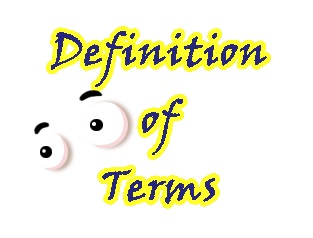In the realm of corporate governance, risk management, and compliance (GRC), the efficacy of internal controls is paramount to safeguarding organizational assets, ensuring compliance with regulatory requirements, and mitigating risks. Central to this endeavor are control design and operating effectiveness reviews, two critical processes that play complementary yet distinct roles in enhancing the control environment within an organization. This article will delve into the significance of control design and operating effectiveness review, elucidating their differences, and underscoring their collective importance in fostering robust internal control frameworks.
Control design encompasses the establishment and implementation of policies, procedures, and mechanisms aimed at preventing, detecting, and addressing risks and deficiencies within an organization’s operations. It involves the identification of control objectives, the assessment of inherent risks, and the design of control activities tailored to mitigate those risks effectively. Effective control design lays the foundation for a robust internal control system by ensuring that controls are adequately designed to address identified risks and achieve organizational objectives. For instance, in the context of financial reporting, control design may entail the segregation of duties, approval hierarchies, and reconciliation procedures to mitigate the risk of financial misstatement and fraud.
The importance of control design can further be understood through the following points:
Risk Mitigation:
Effective control design helps identify and mitigate risks associated with various business activities. By implementing controls at key points in the process, organizations can reduce the likelihood of errors, fraud, and non-compliance.
Compliance:
Control design plays a crucial role in ensuring compliance with laws, regulations, and industry standards. By aligning controls with regulatory requirements, organizations can demonstrate their commitment to ethical conduct and transparency.
Operational Efficiency:
Well-designed controls streamline operations by standardizing processes, reducing redundancies, and enhancing productivity. By establishing clear procedures and responsibilities, organizations can achieve greater efficiency and effectiveness in their day-to-day activities.
Protection of Assets:
Control design helps safeguard the organization’s assets, including financial resources, intellectual property, and sensitive information. By implementing controls such as access restrictions, segregation of duties, and asset tracking, organizations can minimize the risk of loss or misuse of assets.
Operating effectiveness review, on the other hand, pertains to the assessment of the actual functioning and performance of established controls. While control design focuses on the adequacy of control measures, in theory, operating effectiveness review evaluates their practical implementation and efficiency in achieving their intended objectives. This process involves testing, evaluating, and monitoring control activities to ascertain whether they operate as intended, identify any gaps or weaknesses, and facilitate timely remediation. Through operating effectiveness review, organizations can validate the reliability and consistency of their control processes and mechanisms, ensuring that they provide the desired level of assurance over the accuracy and integrity of operations.
The importance of operating effectiveness review is summarized as follows:
Assurance of Control Performance:
Operating effectiveness review provides assurance that internal controls are functioning as designed and are effectively mitigating risks. By testing controls through various methods such as walkthroughs, testing of transactions, and observation, organizations can identify weaknesses and areas for improvement.
Continuous Improvement:
Through operating effectiveness review, organizations can identify opportunities to enhance control effectiveness and efficiency. By analyzing control deficiencies and root causes, organizations can implement corrective actions and preventive measures to strengthen their control environment over time.
Compliance Verification:
Operating effectiveness review verifies compliance with regulatory requirements and internal policies. By assessing control performance against established criteria, organizations can identify gaps and take corrective actions to address compliance issues proactively.
Stakeholder Confidence:
Operating effectiveness review provides stakeholders, including management, shareholders, regulators, and customers, with confidence in the reliability and integrity of the organization’s internal controls. By demonstrating a commitment to sound governance and risk management practices, organizations can enhance trust and credibility.
In conclusion, control design and operating effectiveness review are integral components of an effective internal control framework, each contributing to the overall assurance and reliability of organizational processes. While control design focuses on the strategic development and implementation of control measures, operating effectiveness review validates their practical functioning and performance. By synergistically addressing control design and operating effectiveness, organizations can establish a robust control environment, mitigate risks, and uphold regulatory compliance. Embracing a proactive approach to control design and operating effectiveness review is essential for organizations seeking to enhance governance, minimize risks, and achieve sustainable success in today’s dynamic business landscape.



